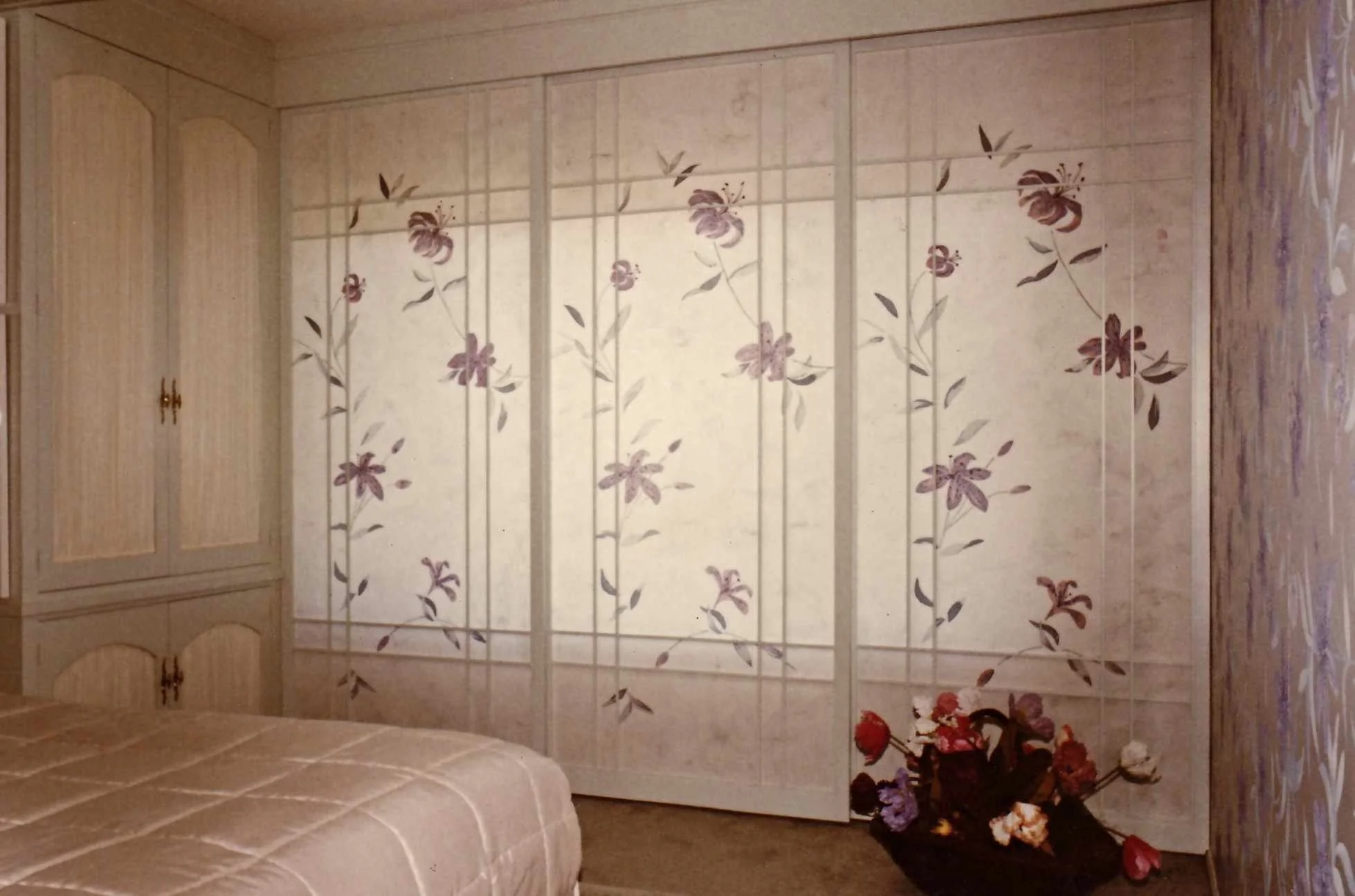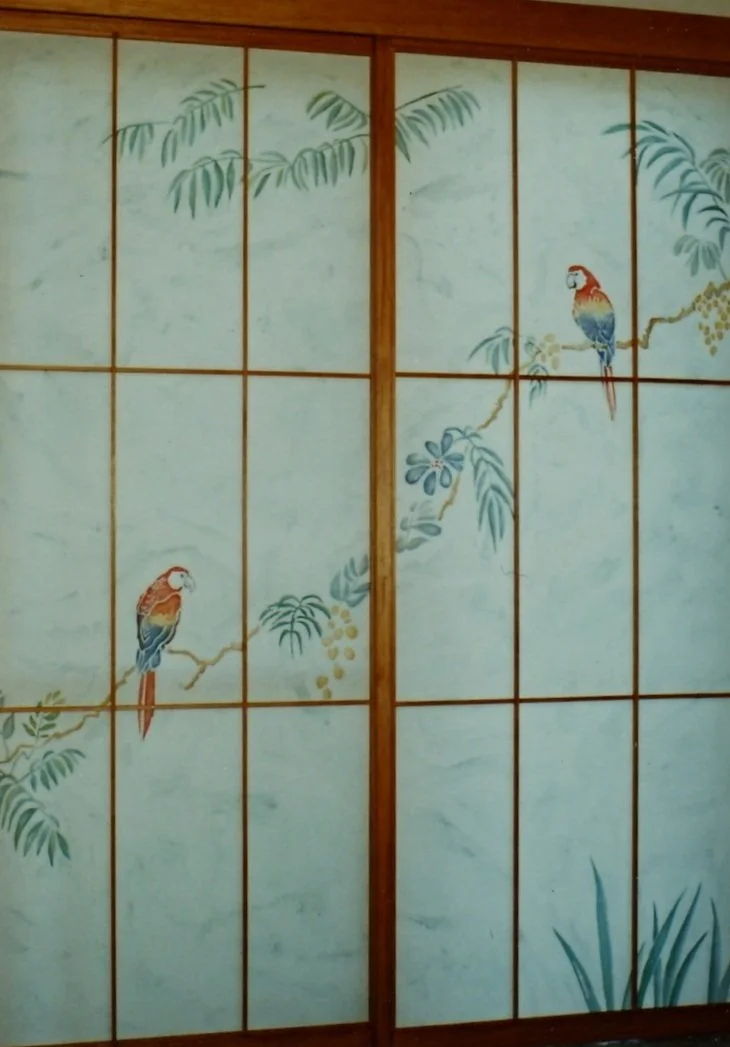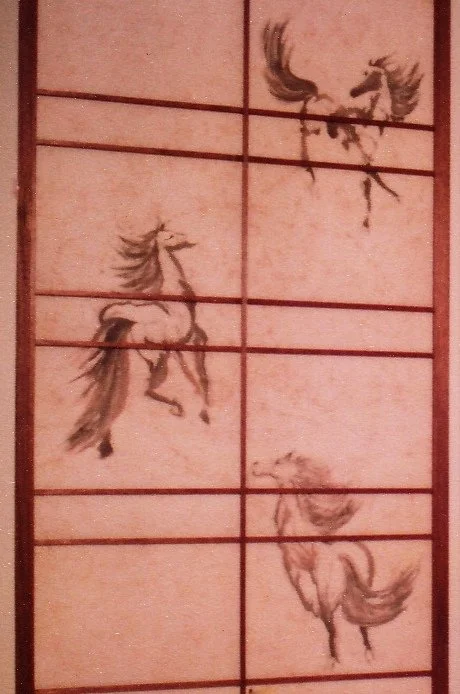To batik or not to batik?
Batik an Indonesian method of producing colored designs on textiles by dyeing them, having first applied wax to the parts to be undyed.” (New Oxford American Dictionary)
This is one way we produce custom artwork for your shoji panels.
Design Shoji celadon lacquered frames with lavender flowers dyed into the insert
Wren works with you on color palette, design and fabric. Then we collaborate on laying it out so that the design and gridwork harmonize. Finally, Brian assembles the shoji panels so they stay perfectly flat and straight over time. This can be tricky as the fabric exerts quite a pull on the frame, but we both like how the dyeing process creates a finished design on both sides of the insert, so that both sides of the door are equally beautiful.
Moreover, the hand-dyed colors become more brilliant when backlit, complementing the natural translucence of a shoji screen. Although hand-applied batiks are highly labor intensive, this “stained glass” effect cannot be replicated with surface painted or printed patterns. We like how using custom batik inserts enhances the light, airy ambience shoji are noted for.
A tropical scene
Some clients love the idea of a design across their shoji screens, especially when there is no outside view. Other’s prefer the traditional unadorned look; what do you think?
Horses at play



